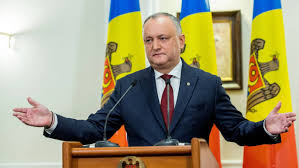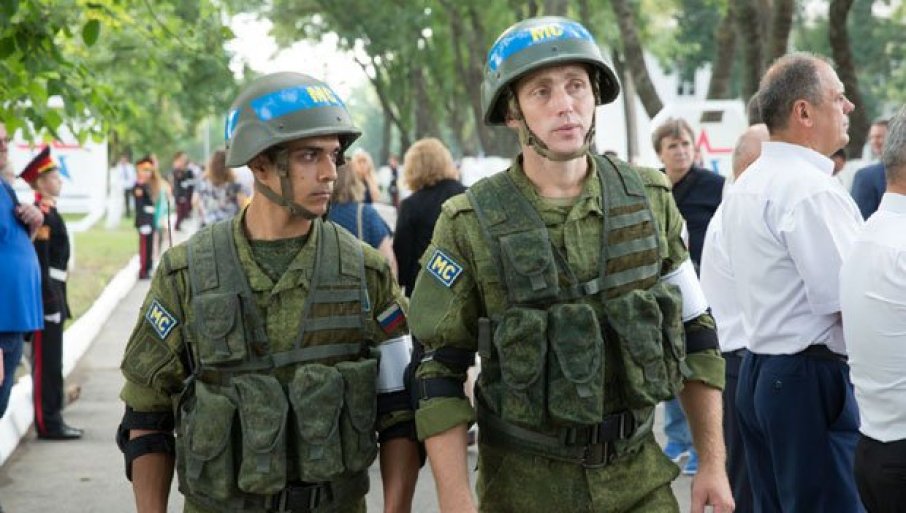The GPA is going to assemble for the planned meeting on May 27, to discuss a demand to the central government in Chisinau for increased autonomy, in a move initiated by pro-Russian MPs who are the Kremlin’s agents of influence. If President Maia Sandu of Moldova fails to comply with the demand, the MPs threaten to hold a “referendum to decide the region’s future,” – the resolution by Gagauzian Congress of all-level deputies says.
The demand involves all agencies previously moved by the reforms to Chisinau be returned to the autonomy, Gagauzia’s Special Legal Status Act stipulated by Moldova’s Constitution, a new power-sharing mechanism to expand the power locally, and an established body to “overcome differences”. The MPs also demand an end to “election-meddling”, referring to the investigating bodies inquiring into violations.
The MPs also want Gagauzia to have a right to decide its future in national foreign policy making, with Russia, Turkey, Germany, and the UN making sure “the authorities observe the law”.
The wording makes these 15 demands doubtful to be accepted by Chisinau.
The essence of the paper is similar to the demands that Russia promoted as a settlement plan for Donbas in 2015. There is no doubt, therefore, the resolution was prepared by Moscow with a view to roil Moldova, by launching a scenario of separatism in Gagauzia.

Eugenia Gutul, a pro-Russian Șor Party candidate won the second round of local election in Gagauzia, the autonomous region of Moldova. Gagauzia is strongly pro-Russian. With Moscow-tied candidate in power, Russia will have a chance to strengthen its hand at least in this part of Moldova. President Maia Sandu of Moldova claimed Russia interferes with Moldova’s internal affairs, as many candidates for the head of the Gagauz autonomy are Russia’s agents.
The population of Gagauzia is about 4 percent of Moldova’s population. The Constitution says the autonomy does not have the right to make any decisions related to foreign policy. With Moldova being part of the European Union the Gagauz people secure the rights of autonomy and national minorities. But Moscow seeks to Russify the region. The schools in the autonomy hardly teach the Gagauz language. But instead, Gagauz leaders promote Russian national identity, – a scenario similar to that of Donbas in 2014 when destabilization of the situation started.
Ilan Shor, a billionaire and the Șor Party leader, was sentenced to seven years in prison in 2017 for stealing a billion dollars from three Moldovan banks. He managed to escape to Israel, however, that denied Moldova’s request for his extradition in 2020. Following the US sanctions against Shor in October, Moldova’s government expects him to be extradited after all. The Chisinau Court of Appeal, in April 2023, sentenced Shor in absentia to 15 years in prison.
Early this year, Sandu accused Russia of trying to stage a coup in Moldova. The Kremlin’s plan was that citizens of Russia, Montenegro, Belarus, and Serbia who entered Moldova should have done that.
Starting from the 1990s, Moscow has been seeking to impose a federal model on Moldova, with Russia-controlled autonomies of Transnistria and Gagauzia dictating Chisinau’s foreign policy.That work was supervised by Dmitry Kozak (Kozak Memorandum), who then focused on Ukraine’s federalization through the LPR/DPR autonomies. Russia’s Foreign Intelligence Service top-ranking officers and some people from the FSB and GRU were part of the process.
The Bashkans in the Gagauz autonomy have always supported Russia, so Russian intelligence faced few problems and resistance locally.
On October 18 this year, the Russian National Liberation Movement launched a campaign in Gagauzia with the aim to “recognize illegal the Soviet breakup and restore the ex-Soviet Union borders as set after the WWII”. This reaffirms that processes in Gagauzia are related to efforts by the FSB and the GRU in the country, according to the 2014 Ukrainian scenario.
The prospect to roil Gagauzia is directly related to the Kremlin’s access to weapons’ transfer there, like it was in Donbas in 2014. But we believe the Russians will not succeed in secret transfer of more than a company as SRG without armor. It is possible meanwhile, that some rebel groups can be formed on the spot, composed of pro-Russian activists and criminals, like the groups that operate in Kosovo’s Mitrovica. They can be reinforced by Russian professional militaries, who may infiltrate as civilians through Moldova or Ukraine.
In this context, Moscow will probably count on deploying its peacekeepers, like in Transnistria, with political support of Ankara, to consolidate its military presence in Gagauzia. If this does not happen, Moscow can solely rely on local Gagauz criminal groups and pro-Russian groups involved from Moldova for active operation, which does not guarantee success.
In early May this year, the Moldovan counterintelligence sources reported that Russian intelligence was active in recruiting boxers and football fans to take part in the protests by the Șor Party. These efforts are similar to those by Russian FSB/GRU agencies in Ukraine in 2014, targeting to set up a standoff against supporters of the revolution. These similarities speak for the Kremlin’s plans to carry out operations in Moldova to roil the Sandu regime and provoke armed conflict in the country.
This scenario is in line with Moscow’s short-term goals and objectives in the region:
1. An attempt to overthrow the democratic regime of Sandu.
2. To roil Moldova, with an attempt to federalize it through referendums, which are held amid armed standoff, to call the legitimacy of power into question.
3. To set up a political disintegration synergy of Transnistria and Gagauzia, with Moldova dismantled as a unitary state.
4. To form a threat along the southwestern borders of Ukraine, so that part of Ukrainian troops would be redeployed from possible counteroffensive directions.
5. To freeze rapprochement between Moldova and the EU.








